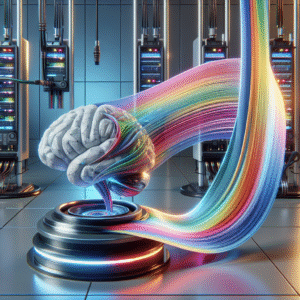Have you ever thought about how our energy choices impact the planet?
Renewable energy technology has become a hot topic in conversations surrounding sustainable development. It’s fascinating to see how this field is evolving and what it means for our future. I’m excited to share the role of renewable energy technology in creating a sustainable world.
Understanding Renewable Energy Technology
Renewable energy technology encompasses various methods for capturing and utilizing energy from sources that restore themselves naturally. These include solar, wind, hydroelectric, geothermal, and biomass energy. I love how diverse these technologies are, providing options depending on the geographical and economic circumstances of different regions.
Types of Renewable Energy Technologies
Let me break down some of the prominent types of renewable energy technologies:
| Type | Description |
|---|---|
| Solar Energy | Comes from sunlight and can be converted into electricity or heat. |
| Wind Energy | Harnesses the power of wind through turbines to generate electricity. |
| Hydroelectric | Utilizes flowing water to produce electricity, often via dams. |
| Geothermal | Taps into the Earth’s internal heat for energy production. |
| Biomass | Involves burning organic materials to generate heat or electricity. |
Each of these technologies presents unique advantages and challenges, and I find it interesting how they can complement one another in creating a comprehensive energy strategy.
The Importance of Renewable Energy in Sustainable Development
Sustainable development strives to meet the needs of the present without compromising the ability of future generations to meet their own needs. Renewable energy plays a crucial role in this pursuit by reducing greenhouse gas emissions and promoting energy security.
Reducing Carbon Footprint
The burning of fossil fuels for energy is responsible for a large percentage of global greenhouse gas emissions. By using renewable energy technologies, I can significantly reduce my carbon footprint. Solar panels on rooftops or wind turbines in surrounding areas are just a couple of the ways individuals and communities can harness clean energy.
Promoting Energy Security
As I’m sure we all know, fossil fuel resources are finite, and relying solely on them can be risky. Renewable energy provides an opportunity to create a more resilient energy infrastructure. Nations that invest in renewable technologies can lessen their dependence on imported fuels, leading to greater energy security.
Economic Benefits of Renewable Energy
Investing in renewable energy technology is not just good for the environment; it’s also beneficial for the economy.
Job Creation
One of the most impactful economic benefits is the vast potential for job creation. The renewable energy sector is rapidly growing, which means more employment opportunities in engineering, manufacturing, and installation. From my perspective, this growth is promising, especially in communities that may have limited job options.
Cost Competitiveness
I remember when renewable energy sources were often criticized for being expensive. Nowadays, the cost of technologies such as solar and wind is declining rapidly. In many regions, renewables are already cheaper than coal or natural gas. This shift not only makes renewable energy economically viable but also encourages widespread adoption.
Social Impact of Renewable Energy
Renewable energy technology contributes to social equity and community development.
Access to Energy
In many developing countries, access to reliable energy is a significant barrier to progress. I believe that renewable energy projects can play a role in providing affordable electricity to remote and underserved communities. For instance, installing solar microgrids can help thousands of households gain access to power.
Improved Health Outcomes
Using clean energy sources helps minimize air pollution, a major contributor to health problems like respiratory diseases. Transitioning to renewable energy not only protects the environment but also enhances public health. I can’t help but feel that this is an essential element of living in a healthier society.
Challenges to Adoption of Renewable Energy Technology
While I am enthusiastic about the potential of renewable energy technologies, I also recognize that several challenges must be addressed.
Intermittency Issues
One challenge that often comes up in discussions about renewable energy is intermittency. Solar and wind resources are not always available; for example, the sun doesn’t shine at night and the wind doesn’t always blow. This means that energy storage solutions become vital for reliability.
| Storage Solutions | Description |
|---|---|
| Batteries | Store electricity for later use. |
| Pumped Storage | Use excess energy to pump water uphill. |
| Thermal Storage | Store heat in materials for later use. |
Finding effective solutions to energy storage is crucial in ensuring that renewable energy can be relied upon consistently.
Infrastructure and Investment Needs
Implementing renewable energy technologies often requires significant upfront investments and changes to existing infrastructure. However, I believe that long-term benefits far outweigh the initial costs. Investment in smart grids, electric vehicle charging stations, and upgraded transmission lines will facilitate a wider adoption of renewable energy.
Government Policies and Initiatives
Governments play an essential role in promoting the development and implementation of renewable energy technologies.
Incentives and Subsidies
I have seen how many countries introduce incentives such as tax rebates or grants for individuals or businesses that invest in renewable energy. These policies help offset initial costs and encourage more people to adopt clean energy technologies.
International Agreements
Global climate change agreements, such as the Paris Accord, push nations to commit to reducing emissions. I think these partnerships encourage countries to collaborate on renewable energy projects, share technology, and work toward mutual goals.
Future of Renewable Energy Tech
The future of renewable energy technology looks bright, and I am excited about the innovations on the horizon.
Advancements in Technology
I am amazed by how rapidly renewable energy technology is evolving. Innovations in solar panel efficiency and wind turbine design will only enhance the feasibility of these resources. Companies are continually researching ways to improve energy capture, storage, and distribution.
Integration with Existing Systems
A promising aspect of future developments is the potential for renewable energy to integrate with existing energy infrastructures. Smart grids, energy-efficient buildings, and electric vehicles can all work together to improve energy efficiency and accessibility.
Community-Based Initiatives
I also see an increasing trend toward community-based renewable energy initiatives. By empowering local communities to invest in solar farms or wind projects, we can create self-sustaining energy solutions that promote economic growth and social equity.
Conclusion
Reflecting on the role of renewable energy technologies in sustainable development, it’s clear to me that these advancements are vital for a sustainable future. By reducing our carbon footprints, boosting economic growth, and improving community well-being, renewable energy technologies provide a pathway toward a cleaner, more equitable world.
I hope this information encourages you to think about the power of renewable energy technologies in fostering sustainable development. It’s exciting to envision how these innovations can change the way we live, work, and interact with the environment. Let’s look forward to a greener tomorrow, powered by the boundless energy of nature.






